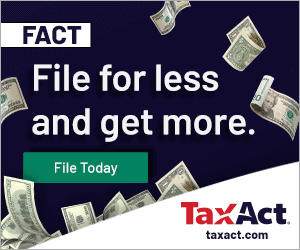How Your Business Structure Can Impact Your Business Taxes


File your business taxes with confidence.
Backed by our $100k accuracy guarantee.
By Mark Jaeger
There’s nothing simple about starting and owning a business. Choices are everywhere — in business plans, company names, pricing, employees, benefits and office space.
But first, in order to register your company with state and federal agencies, you’ll need to choose a business structure, and this choice can have ramifications that are not immediately clear.
A business’s structure is basically the way it’s organized. It answers questions like who’s in charge, how profits will be distributed and whether owners are responsible for debts accrued by the business.
The most common IRS-recognized business structures include the following:
-
Sole proprietorships
, which have one owner. That owner takes home all of the business’s profits as personal income. The company and the owner are the same legal entity; the owner is personally liable for any business debts.
-
Partnerships
, which are structured like sole proprietorships except with an unlimited number of owners.
-
C corporations
, which have an unlimited number of shareholders. Each shareholder owns part of the company. Profits are distributed (as dividends) among all owner-shareholders. C corporations and their owners are separate legal entities; owners are typically not personally liable for business debts.
-
S corporations
, which are structured like C corporations except that the number of shareholders is capped at 100.
Clearly, choice of structure affects how a business operates. Perhaps less clear, it also affects how much a business and its owners pay in taxes, sometimes dramatically so.
The U.S. tax code is quite detailed, and there are countless tax ramifications of selecting any particular business structure. But there are a few basic tax differences we can rely on to help us decide.
Federal business taxes break down into four main categories:
-
Income taxes
, which are taxes on a business’s profit
-
Employment taxes
, which are employees’ Medicare and Social Security contributions
-
Self-employment taxes
, which are self-employed individuals’ Medicare and Social Security contributions
-
Excise taxes
, which are special taxes applied to particular products or services (such as tobacco, alcohol, gambling and some vaccines)]
Excise taxes, for one, are applied regardless of business structure. But for income tax and employment/self-employment taxes, how much businesses and their owners end up paying is directly related to structure.
Most large U.S. companies are structured as corporations, which are separate legal entities from their owners. They are also separate tax entities. To the IRS, the corporation is a person to be taxed like any other person. In terms of business income tax, it means profits are often taxed twice.
Since the business is a tax entity unto itself, it pays its own income tax on any profits it earns. Then, when those profits are distributed to shareholders as dividends, those shareholders pay income tax on it through their individual tax returns.
This double taxation is one of the main tax drawbacks to the corporate business structure.
On the upside, a corporation doesn’t have to distribute every last penny. It’s allowed to keep some of its profits in the company, typically (or ostensibly) to cover post-filing expenses or to put toward future growth.
This can be a tax advantage: while that undistributed money is still taxed a second time, it’s taxed at the corporate income-tax rate, which is often lower than the owners’ personal rates.
To avoid double taxation on profits, and to reduce the complexities of tax filing, many smaller businesses choose to organize as one of the pass-through tax entities.
Sole proprietorships, partnerships and S corporations are all pass-through entities; they and their owners are the same tax entity in the eyes of the IRS, so income tax is only levied once. All profits “pass through” the business to its owners, who pay income tax on that money when they file their personal tax returns.
Pass-through entities can potentially save a lot when it comes to income tax. It’s single versus double taxation. Easy decision, right? Not always. Pass-through entities can get slammed when it comes to Medicare and Social Security.
Social Security and Medicare contributions, collectively known as employment taxes, are calculated based on a person’s income. When you work for a company as an employee, your income is the wages you take home, and you and the company split the cost of your employment taxes.
When you work for yourself, your income is your business’s entire net profit, and no one is splitting anything.
Self-employment taxes can be a huge drain. For this reason, many self-employed small-business owners choose the S corporation structure.
In essence, S corporations combine the income-tax benefit of passing through profits with the employment-tax benefit of being employed by someone else.
In corporations, both C and S types, owners also can be employees. The business pays them wages just like any other employees. And as employees, those business owners pay employment taxes only on their wages, not on their companies’ entire profits.
Ultimately, which structure is most beneficial depends on the specifics of the company and the corresponding minutiae of the U.S. tax code.
But, in short: if you’re mostly looking for tax simplicity, a sole proprietorship or partnership is a good bet; if you’re mostly looking for tax savings and have fewer than 100 owners, an S corporation might be the right fit; and finally, if you’ve got 1,000 owners, simplicity is probably not in the cards, and the S-corporation isn’t an option – C corporation it is.






